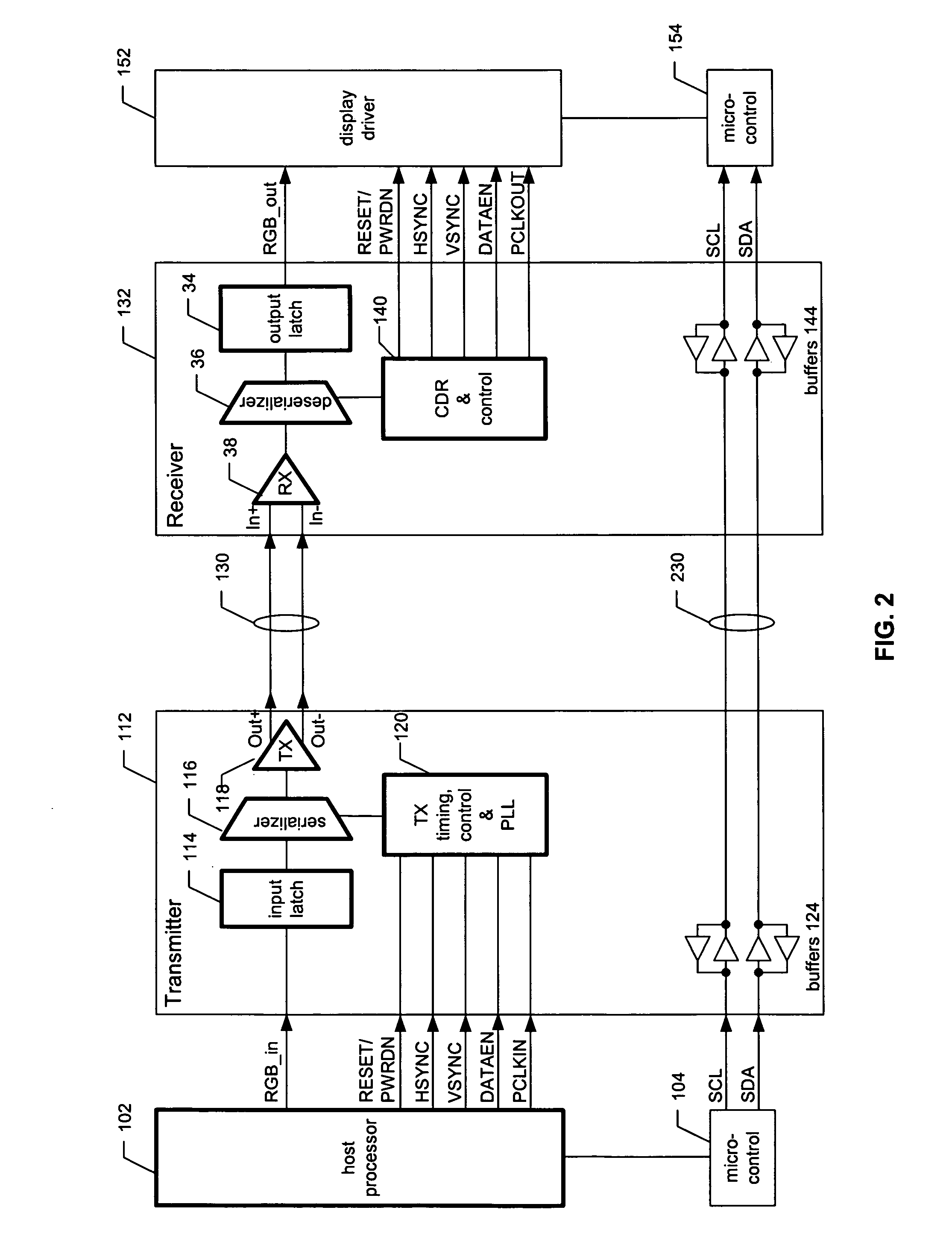Use of differential pair as single-ended data paths to transport low speed data
a data path and differential pair technology, applied in the field of transmission and reception of both high speed and low speed serial data signals, can solve the problems of increasing power consumption to transport faster and wider signals from a source, prone to electromagnetic interference (emi) related problems, etc., and achieve the effect of reducing power consumption
- Summary
- Abstract
- Description
- Claims
- Application Information
AI Technical Summary
Benefits of technology
Problems solved by technology
Method used
Image
Examples
Embodiment Construction
[0014]Various signals need to be sent from a source to a sink, e.g., when the source is a host processor and the sink is a display driver. Such signals can include RGB signals, horizontal and vertical synchronization signals (HSYNC and VSYNC), a processor clock signal (PCLKIN), a data enable signal (DATAEN) and a reset / power down signal (RESET / PWRDN). Also, additional low speed control signals, such as Inter-Integrated Circuit (I2C) signals, may also need to be sent. An example of this is shown in FIG. 1, described below.
[0015]FIG. 1 shows a transmitter 112 and a receiver 132 that are used to send video signals from a host processor 102 (also referred to simply as a host) to a display driver 152. The display driver 152, which likely includes column and row drivers, drives a display (not shown), such as a liquid crystal display (LCD) of a mobile phone, camera, or other mobile device.
[0016]The transmitter 112 is shown as including an input latch 114, a serializer 116, an output stage ...
PUM
 Login to View More
Login to View More Abstract
Description
Claims
Application Information
 Login to View More
Login to View More - R&D
- Intellectual Property
- Life Sciences
- Materials
- Tech Scout
- Unparalleled Data Quality
- Higher Quality Content
- 60% Fewer Hallucinations
Browse by: Latest US Patents, China's latest patents, Technical Efficacy Thesaurus, Application Domain, Technology Topic, Popular Technical Reports.
© 2025 PatSnap. All rights reserved.Legal|Privacy policy|Modern Slavery Act Transparency Statement|Sitemap|About US| Contact US: help@patsnap.com



